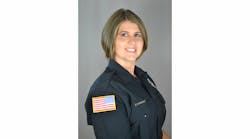Now it is time for me to get a little more official with you my friends. There is a great deal in the news these days about harassment, bullying, and a variety of other offenses which tend to diminish our people and ruin our efforts to encourage teamwork and participation. Let me suggest that all members of the fire service must constantly be on guard to prevent or avoid any form of workplace harassment. This is critical because harassment is a form of employment discrimination that violates Title VII of the Civil Rights Act of 1964, the Age Discrimination in Employment Act of 1967, (ADEA), and the Americans with Disabilities Act of 1990, (ADA).
Harassment is unwelcome conduct that is based on race, color, religion, sex (including pregnancy), national origin, age (40 or older), disability or genetic information. Harassment becomes unlawful where 1) enduring the offensive conduct becomes a condition of continued employment, or 2) the conduct is severe or pervasive enough to create a work environment that a reasonable person would consider intimidating, hostile, or abusive. Anti-discrimination laws also prohibit harassment against individuals in retaliation for filing a discrimination charge, testifying, or participating in any way in an investigation, proceeding, or lawsuit under these laws; or opposing employment practices that they reasonably believe discriminate against individuals, in violation of these laws.
There are some fire departments which have created a series of initiation rituals which have become a sort of tradition over the years. While many have a long and storied history, let me suggest that the time has come to relegate them to the dustbin of history. To continue with these forms of subtle (and not so subtle) harassment can easily subject your fire department to action under the applicable local, state, and federal laws. You do not need this nonsense.
Petty slights, annoyances, and isolated incidents (unless extremely serious) will not rise to the level of illegality. To be unlawful, the conduct must create a work environment that would be intimidating, hostile, or offensive to reasonable people.
Offensive conduct may include, but is not limited to, offensive jokes, slurs, epithets or name calling, physical assaults or threats, intimidation, ridicule or mockery, insults or put-downs, offensive objects or pictures, and interference with work performance. Harassment can occur in a variety of circumstances, including, but not limited to, the following:
- The harasser can be the victim's supervisor, a supervisor in another area, an agent of the employer, a co-worker, or a non-employee.
- The victim does not have to be the person harassed, but can be anyone affected by the offensive conduct.
- Unlawful harassment may occur without economic injury to, or discharge of, the victim.
Prevention is the best tool to eliminate harassment in the workplace. Employers are encouraged to take appropriate steps to prevent and correct unlawful harassment. They should clearly communicate to employees that unwelcome harassing conduct will not be tolerated. They can do this by establishing an effective complaint or grievance process, providing anti-harassment training to their managers and employees, and taking immediate and appropriate action when an employee complains. Employers should strive to create an environment in which employees feel free to raise concerns and are confident that those concerns will be addressed.
Employees are encouraged to inform the harasser directly that the conduct is unwelcome and must stop. Employees should also report harassment to management at an early stage to prevent its escalation.
Fire Department Liability For Harassment
Your fire department is automatically liable for harassment by a supervisor that results in a negative employment action such as termination, failure to promote or hire, and loss of wages. If the supervisor's harassment results in a hostile work environment, the employer can avoid liability only if it can prove that: 1) it reasonably tried to prevent and promptly correct the harassing behavior; and 2) the employee unreasonably failed to take advantage of any preventive or corrective opportunities provided by the employer.
The employer will be liable for harassment by non-supervisory employees or non-employees over whom it has control (e.g., independent contractors or customers on the premises), if it knew, or should have known about the harassment and failed to take prompt and appropriate corrective action.
When investigating allegations of harassment, the EEOC looks at the entire record: including the nature of the conduct, and the context in which the alleged incidents occurred. A determination of whether harassment is severe or pervasive enough to be illegal is made on a case-by-case basis.
Sexual Harassment
Unwelcome sexual advances, requests for sexual favors, and other verbal or physical conduct of a sexual nature constitute sexual harassment when this conduct explicitly or implicitly affects an individual's employment, unreasonably interferes with an individual's work performance, or creates an intimidating, hostile, or offensive work environment.
Sexual harassment can occur in a variety of circumstances, including but not limited to the following:
- The victim as well as the harasser may be a woman or a man. The victim does not have to be of the opposite sex.
- The harasser can be the victim's supervisor, an agent of the employer, a supervisor in another area, a co-worker, or a non-employee.
- The victim does not have to be the person harassed but could be anyone affected by the offensive conduct.
- Unlawful sexual harassment may occur without economic injury to or discharge of the victim.
- The harasser's conduct must be unwelcome.
It is helpful for the victim to inform the harasser directly that the conduct is unwelcome and must stop. The victim should use any employer complaint mechanism or grievance system available.
When investigating allegations of sexual harassment, the federal EEOC looks at the whole record: the circumstances, such as the nature of the sexual advances, and the context in which the alleged incidents occurred. A determination on the allegations is made from the facts on a case-by-case basis.
Prevention is the best tool to eliminate sexual harassment in the workplace. Employers are encouraged to take steps necessary to prevent sexual harassment from occurring. They should clearly communicate to employees that sexual harassment will not be tolerated. They can do so by providing sexual harassment training to their employees and by establishing an effective complaint or grievance process and taking immediate and appropriate action when an employee complains.
Bullying
Workplace bullying refers to any repeated, intentional behavior directed at an employee that is intended to degrade, humiliate, embarrass, or otherwise undermine their performance. It can come from colleagues, supervisors, or management, and is a real problem for workers at all levels. It's no joke. By learning to recognize and address workplace bullying behavior, you can help to create a healthier, more productive environment for yourself and your colleagues. Keep reading after the jump to learn more.
It is also unlawful to retaliate against an individual for opposing employment practices which discriminate based on sex or for filing a discrimination charge, testifying, or participating in any way in an investigation, proceeding, or litigation under Title VII.
It is important for fire officers to become familiar with all pertinent state and local policies regarding harassment in the workplace. While in many cases they are quite similar, differences may occur from time to time. The officer needs to be aware of the rules and regulations under which they will operate.
References
- U.S. Equal Employment Opportunity Commission - Facts on Sexual Harassment
- U.S. Equal Employment Opportunity Commission - Facts on Harassment
HARRY R. CARTER, Ph.D., CFO, MIFireE, a Firehouse.com Contributing Editor, is a municipal fire protection consultant based in Adelphia, NJ. Dr. Carter retired from the Newark, NJ, Fire Department and is a past chief and active life member of the Adelphia Fire Company. Follow Harry on his "A View From my Front Porch" blog. You can reach Harry by e-mail at [email protected].







